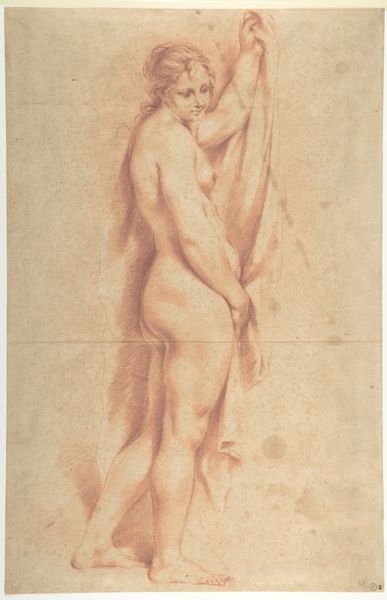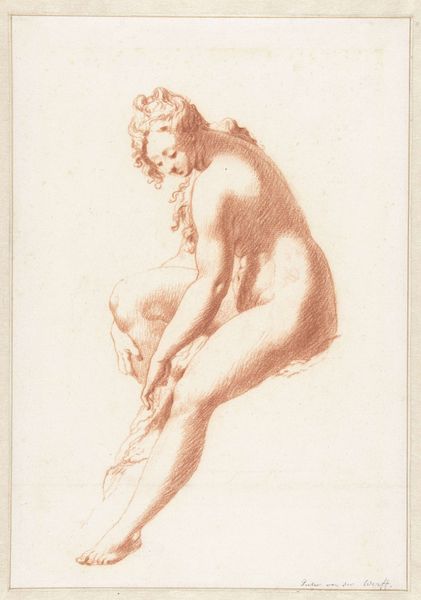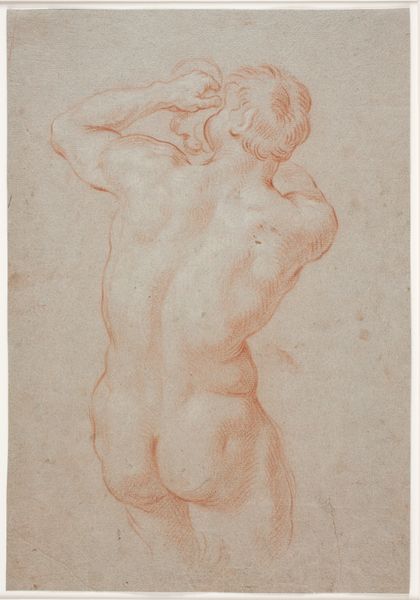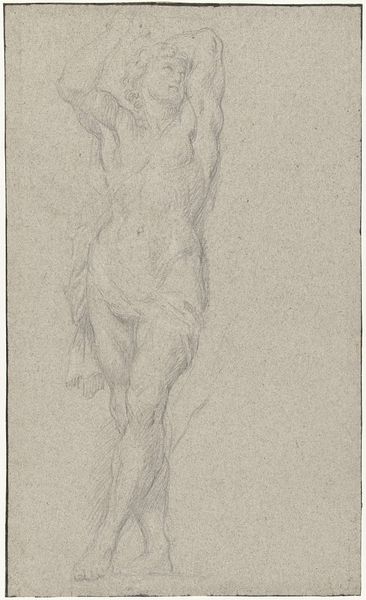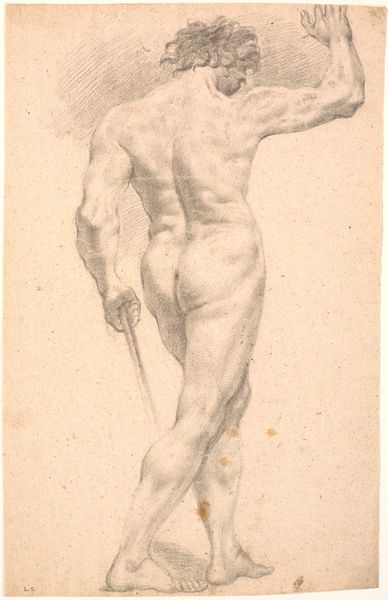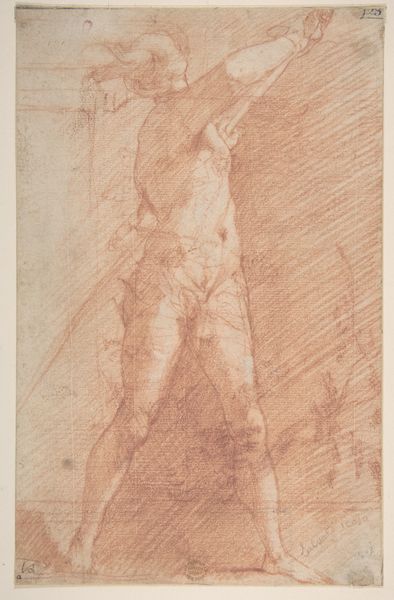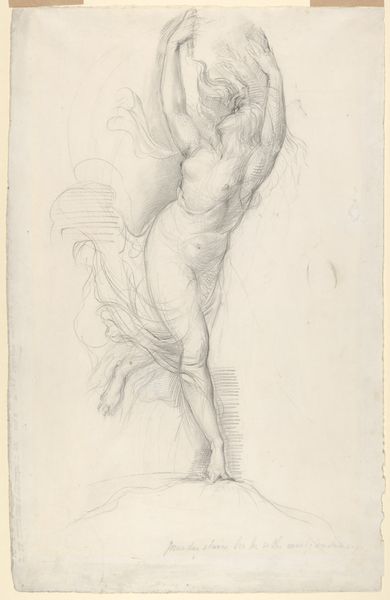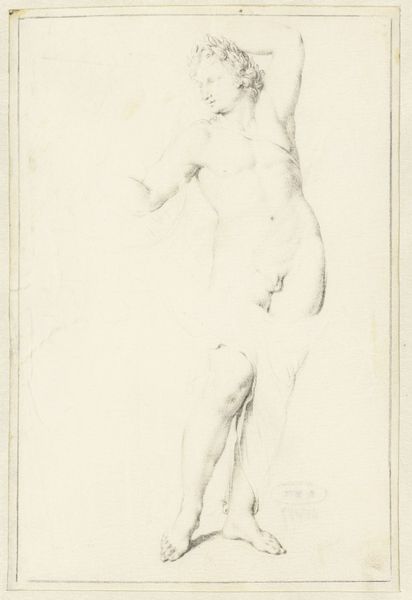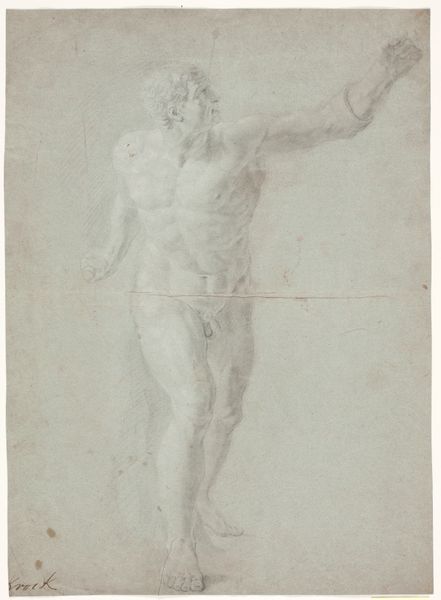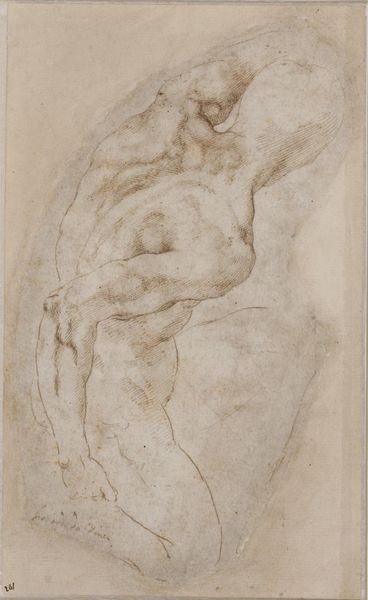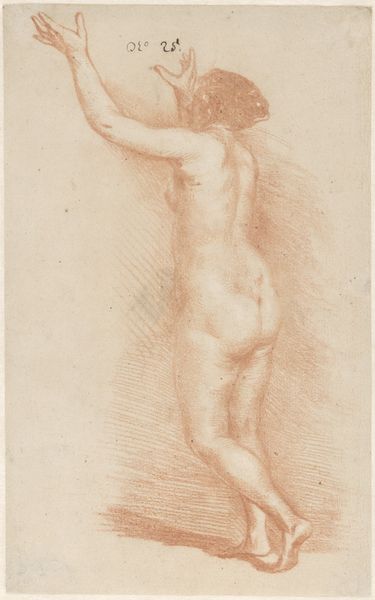
Dimensions: support: 370 x 270 mm
Copyright: CC-BY-NC-ND 4.0 DEED, Photo: Tate
Editor: Here we have John Hamilton Mortimer's "Study of a Classical Statue" from the Tate Collections. I'm struck by the dynamism he captures with such simple lines. What is your interpretation of the statue's pose and the artist's rendering? Curator: Note the rigorous application of line and tone to convey form. Mortimer uses hatching to define musculature and spatial recession. The statue’s contrapposto stance is rendered with a clear understanding of weight distribution and anatomical accuracy. Editor: So, it's about the effective use of line to depict movement and form? Curator: Precisely. Mortimer is less concerned with emotive expression than with the articulation of the ideal human form through careful observation and skillful draftsmanship. Editor: That’s helpful, I see the focus on structure now. Thank you. Curator: Indeed, a closer look reveals the artist's command of classical principles.
Comments
tate 8 months ago
⋮
http://www.tate.org.uk/art/artworks/mortimer-study-of-a-classical-statue-t09125
Join the conversation
Join millions of artists and users on Artera today and experience the ultimate creative platform.
tate 8 months ago
⋮
As well as the Academy's collection of casts, students could make drawings from sculpture and casts in a private collection in London owned by the Duke of Richmond. This is a study from a cast of a statue of Bacchus by the sixteenth century Italian sculptor and architect, Jacopo Sansovino. Gallery label, September 2004

